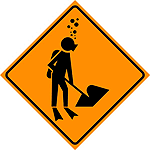|
| |

|
|
| < Prev. month |
Next month > |

|
This page under construction.
Here are some of the topics that will be covered in this chapter. More text and images will eventually be added to this section. Thank you for your patience.
|
- By September, intertidal algae are lush and overgrown. Some are beginning to senesce. Many algae begin to spawn in September, with spores being released from specialized blades with lumps, bumps, or different colors.
- Like some annual algae, some tunicates, bryozoans, and sponges begin to die back in fall.
- A number of young grazing animals such as red sea urchins, chitons (veiled chiton), and limpets (rough limpets, ribbed limpets), settle out of plankton during calm fall conditions.
- During summer and fall, red octopus (Octopus rubescens) brood clusters of 2,000-3,000 eggs in intertidal areas for about six to eight weeks. Like most octopus, the female red octopus will dies about the time her eggs hatch. After hatching, the young red octopus swim around in the deep sea for several months, sometimes congregating near egg-yolk jellies, which are most common in fall. In late fall the young octopus settle out in the kelp beds, often making homes in kelp holdfasts, then move into deeper water as they get older.
- Black turnstones and surfbirds finish their southward migration from nesting areas in the Arctic. Turnstones arrive first, from July to September. Surfbirds arrive between August and October. Both types of birds spend the winter on the Central Coast feeding on intertidal animals.

|
|
